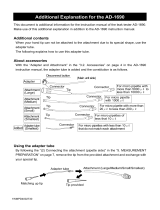
Roche Diagnostics
A-6 Instrument Manual · Version 3.0
1 Safety Hamilton MICROLAB STAR IVD / STARlet IVD pipettor
Safety precautions
Safety precautions
Operator qualification
Operators are required to have a sound knowledge of relevant guidelines and
standards, as well as the information and procedures contained in the Instrument
and Operator’s Manuals.
o Do not perform operation and maintenance unless you have been trained.
o Carefully follow the procedures specified in the Instrument and Operator’s
Manuals for the operation and maintenance of the instrument.
o Leave maintenance, installation, or service that is not described in the Instrument
and Operator’s Manuals to trained Roche service personnel.
o Follow standard laboratory practices, especially when working with biohazardous
material.
Safe and proper use of the instrument
Personal protective equipment o Be sure to wear appropriate protective equipment, including, but not limited to,
safety glasses with side shields, fluid resistant lab coat, and approved disposable
gloves. This is particularly important when dealing with a malfunction of the
instrument where the risk of contamination from spilled liquids exists.
o Wear a face shield if there is a chance of splash or splatter.
Installation o Installation must be performed by trained Roche service personnel only.
Correct use o Use the Hamilton MICROLAB STAR IVD / STARlet IVD pipettor only for
pipetting samples as described in the cobas s 201 system Operator’s Manual.
Operating conditions o Operation outside of the specified ranges may lead to incorrect results or
malfunction of the instrument.
e
For ranges, see Technical specifications on page A-19
o During operation, the instrument must be shielded from sunlight and intense
artificial light.
o Position the instrument in the laboratory in a way permitting personnel to access
the front and sides of the instrument.
o Maintenance (daily maintenance, weekly maintenance, and periodic verification
performed by Roche service personnel) is a mandatory part of the work routine.
o Keep the Instrument Manual in a safe place to ensure it is not damaged and
remains available for use. This manual must be easily accessible at all times.
Particular attention must be paid to the following safety precautions. If these safety
precautions are ignored, the operator may suffer serious or fatal injury. Each precaution is
important.




















